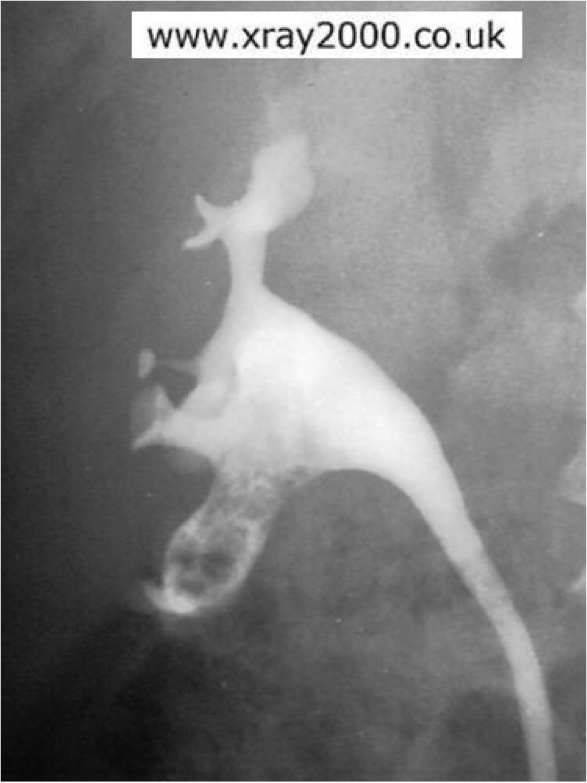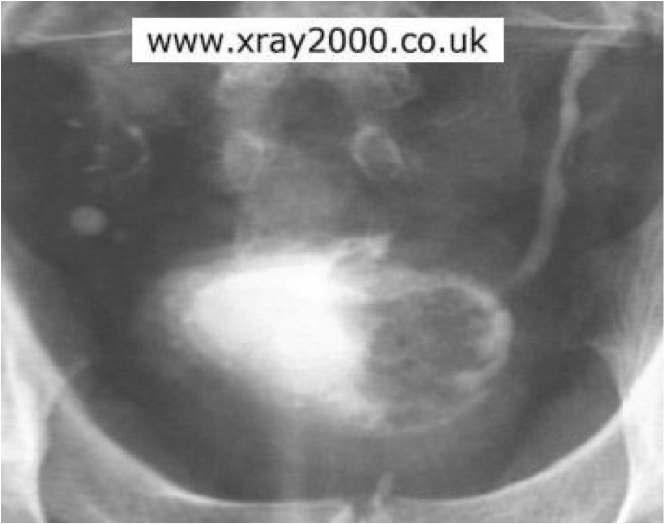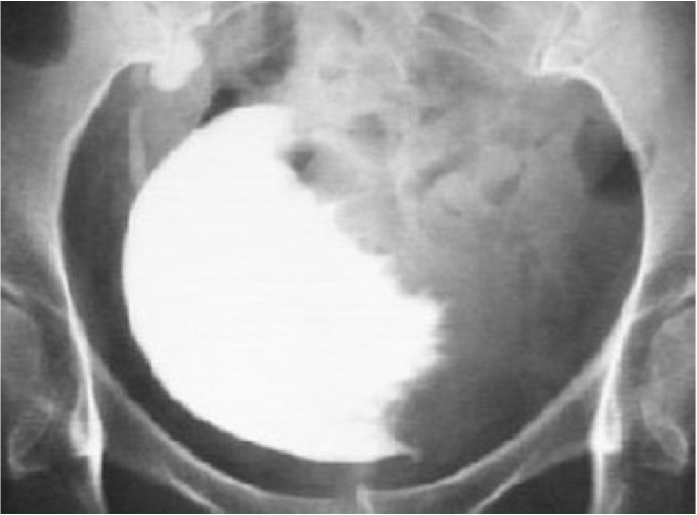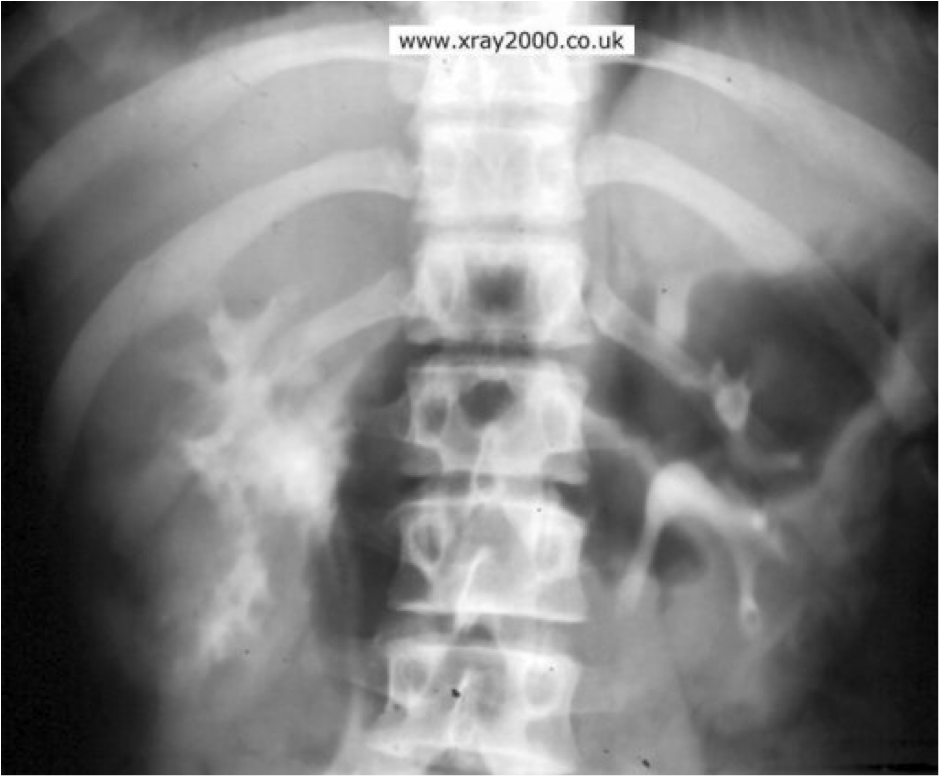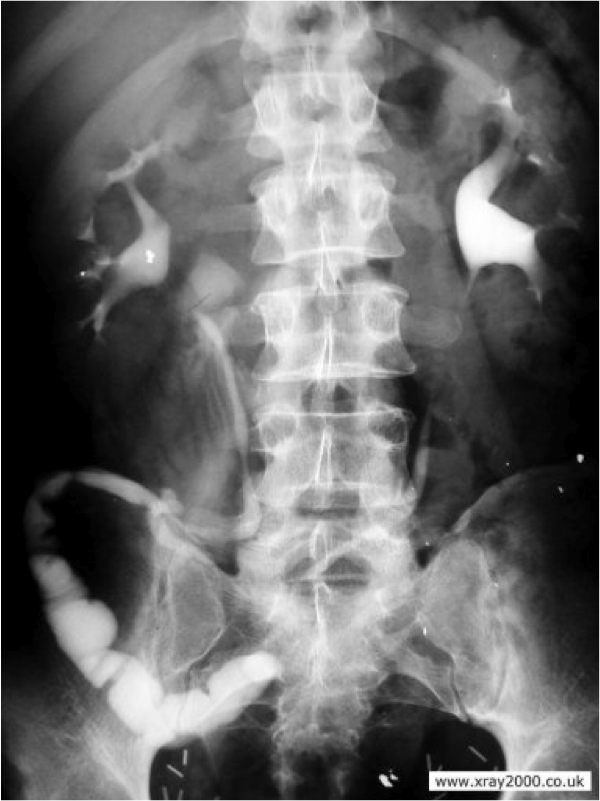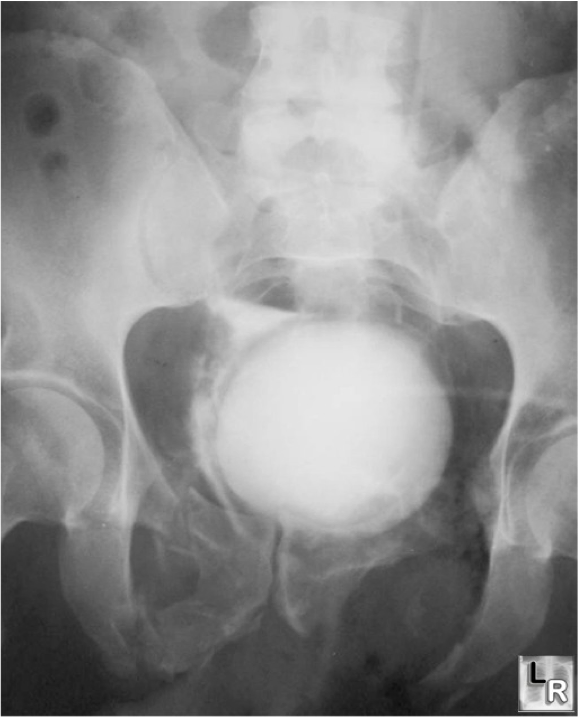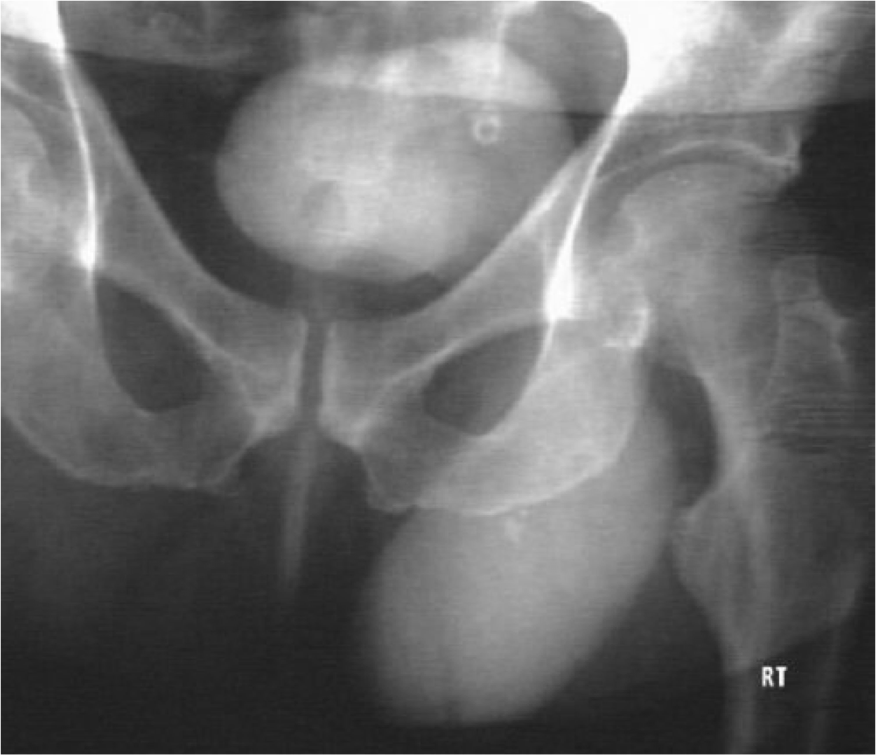Radiographic Pathology-urinary System

.
- 1.
Anatomy of the urinary system include....(check all that apply)
- A.
Kidneys
- B.
Lymph nodes
- C.
Liver
- D.
Bladder
- E.
Urethra
- F.
Rectum
- G.
Ureters
Correct Answer(s)
A. Kidneys
D. Bladder
E. Urethra
G. Ureters -
- 2.
The system functions to remove urine (waste) from the blood and excrete it to the outer realms
- A.
True
- B.
False
Correct Answer
A. True -
- 3.
IVP or excretory urography exams...(check all that apply)
- A.
Shows the structure and function of the system
- B.
Can detect stones, strictures, congenital anomalies, inflammatory diseases,etc.
- C.
Can detect tumors, cysts,
- D.
Requires using iodinated contrast media
- E.
Requires using non-iodinated contrast media
- F.
Only shows structure and not function of the urinary system
Correct Answer(s)
A. Shows the structure and function of the system
B. Can detect stones, strictures, congenital anomalies, inflammatory diseases,etc.
C. Can detect tumors, cysts,
D. Requires using iodinated contrast media -
- 4.
Extracorporeal shock wave lithotripsy (ESWL);
- A.
Uses sound waves to crush stones into powder
- B.
Uses medication to dissolve stones in the kidney
- C.
Uses iodinated contrast media to visualize the kidney
- D.
Uses CT to aide in locating stones and removing them
Correct Answer
A. Uses sound waves to crush stones into powder -
- 5.
Retrograde pyelography exams (check all that apply)
- A.
Are used to evaluate renal masses
- B.
Are used to evaluate renal malignancies
- C.
Is a surgical procedure
- D.
Is used for stent placement
- E.
Is a non-surgical procedure
- F.
Is used for stone retrieval
Correct Answer(s)
C. Is a surgical procedure
D. Is used for stent placement
F. Is used for stone retrieval -
- 6.
Renal angiography is (check all that apply)
- A.
Evaluates only the function of the renal system
- B.
Used to evaluate renal masses
- C.
Used to evaluate renal malignancies
- D.
Is a common procedure for men over 50
Correct Answer(s)
B. Used to evaluate renal masses
C. Used to evaluate renal malignancies -
- 7.
Voiding cystourethrogram (VCUG):
- A.
Evaluates the bladder and urethra
- B.
Is common for geriatric patients
- C.
Is a common pediatric study
- D.
Evaluates for reflux
- E.
Uses a contrast medium
Correct Answer(s)
A. Evaluates the bladder and urethra
C. Is a common pediatric study
D. Evaluates for reflux
E. Uses a contrast medium -
- 8.
Ultrasound imaging studies (check all that apply)
- A.
Are used to diagnose kidney stones
- B.
Are used to diagnose dysentary
- C.
Are used to diagnose renal masses
- D.
Are used to diagnose abscess
- E.
Are used to diagnose cysts
- F.
Are used to diagnose atrophy
- G.
Are used to diagnose renal malagia
Correct Answer(s)
A. Are used to diagnose kidney stones
C. Are used to diagnose renal masses
D. Are used to diagnose abscess
E. Are used to diagnose cysts
F. Are used to diagnose atrophy -
- 9.
CT imaging studies...(check all that apply)
- A.
Are surgical procedures
- B.
Used for stone protocol
- C.
Do not use contrast mediums for renal exams
- D.
Are used to stage tumors
- E.
Are used as a guide for needle biopsy
- F.
Are used to find out the nature of masses
- G.
Are used to evaluate kidneys or bladder for prolapse
Correct Answer(s)
B. Used for stone protocol
D. Are used to stage tumors
E. Are used as a guide for needle biopsy
F. Are used to find out the nature of masses -
- 10.
Ureteral stents... (check all that apply)
- A.
Are placed via cystoscopy
- B.
Connect the renal pelvis with the bladder to maintain patency
- C.
Connect the renal pelvis with the bladder to maintain occlusion
- D.
Do not extend past the urethrocystic junction
- E.
Maintain patency in urethra
Correct Answer(s)
A. Are placed via cystoscopy
B. Connect the renal pelvis with the bladder to maintain patency -
- 11.
This type of tube is a....
- A.
Nephrectomy tube
- B.
Nephrotomy tube
- C.
Nephrostomy tube
- D.
Nephrovesticular tube
Correct Answer
C. Nephrostomy tube -
- 12.
A foley catheter...(check all that apply)
- A.
The most common indwelling type of catheter
- B.
Uses a balloon near tip to maintain patency of urethra
- C.
Uses a balloon near tip to maintain position
- D.
Connects the renal pelvis to the outside
- E.
Is used to infuse contrast for cystograms and VCUs
Correct Answer(s)
A. The most common indwelling type of catheter
C. Uses a balloon near tip to maintain position
E. Is used to infuse contrast for cystograms and VCUs -
- 13.
This picture depicts what type of tube or catheter?
- A.
French
- B.
Nephrostomy
- C.
Foley
- D.
Vestibule
Correct Answer
C. Foley -
- 14.
Renal agenesis..(check all that apply)
- A.
Is a congenital & hereditary disease
- B.
Is a somatic disease acquired from bat poop
- C.
Is symptomatic of interstitial cystitis
- D.
Could describe the absence of one kidney
- E.
Could describe one large kidney
- F.
Symptoms include increased urgency, with pain during voiding
- G.
Does not have any symptoms
Correct Answer(s)
A. Is a congenital & hereditary disease
D. Could describe the absence of one kidney
E. Could describe one large kidney
G. Does not have any symptoms -
- 15.
Hypoplasia descibes a congental disease of having an abnormally small kidney
- A.
True
- B.
False
Correct Answer
A. True -
- 16.
The pathology above is most likely....
- A.
Nephritis
- B.
Hydronephrosis
- C.
Hypomalasia
- D.
Hyperplasia
- E.
Renal failure
Correct Answer
D. Hyperplasia -
- 17.
The image above mostly likely represents what pathology?
- A.
No pathology detectable
- B.
Horseshoe kidney
- C.
Renal agenesis
- D.
Hypoplasia
- E.
Hydronephrosis
- F.
Nephroptosis
Correct Answer
B. Horseshoe kidney -
- 18.
What pathology is commenly falled renal a floating kidney?
- A.
Nephritis
- B.
Horseshoe kidney
- C.
Renal dysplasia
- D.
Urethrovestibule diaphoresis
- E.
Nephroptosis
Correct Answer
E. Nephroptosis -
- 19.
The pathology most evident in the image above is most likely.....
- A.
No pathology visible
- B.
Nephrotoxic hyperplasia
- C.
Cystic kidney
- D.
Hydronephrosis
- E.
Perirenaloptosis
- F.
Ectopic kidney
Correct Answer
F. Ectopic kidney -
- 20.
Check all that apply to pathology most evident by the image above....
- A.
Renal stone
- B.
Bilateral renal metastisis in proxmal urters
- C.
Because of this patient's pathology, they are predisposed to infection
- D.
Because of this patient's pathology, removal of the right kidney is emminent
- E.
Double ureters
- F.
Because of this patient's pathology, they are predisposed to calculi formation
- G.
Because of this patient's pathology, they will need to have surgery in order to the cysts that have overwhelmed their left kidney
Correct Answer(s)
C. Because of this patient's pathology, they are predisposed to infection
E. Double ureters
F. Because of this patient's pathology, they are predisposed to calculi formation -
- 21.
Check all that relate to the pathology indicated above
- A.
Ureterocele
- B.
Cystlike dilation of the ureter near its opening into the bladder
- C.
Cobra head appearence
- D.
Urethrostenosis in the proximal left ureter
- E.
Congenital defect
- F.
Pathology can cause/lead to relflux
- G.
Pathology indicative of chronic catheter use
- H.
Nephrocele effusion
- I.
Staghorn calculus
- J.
Treated through surgical ectostimulation
- K.
Treated with surgical resection
- L.
Treated with antidiuretic hormones to decrease pressure on ureter
Correct Answer(s)
A. Ureterocele
B. Cystlike dilation of the ureter near its opening into the bladder
C. Cobra head appearence
E. Congenital defect
F. Pathology can cause/lead to relflux
K. Treated with surgical resection -
- 22.
Check all that apply to patholgy indicated above
- A.
Cystourethal metastasis
- B.
Cystic fibroid
- C.
Urinary polyp
- D.
Ureterocystic cyst
- E.
Bladder diverticulum
- F.
Not dangerous unless it ruptures
- G.
Can be an indication of bladder cancer
Correct Answer(s)
E. Bladder diverticulum
F. Not dangerous unless it ruptures -
- 23.
Check all that apply to pathology demonstrated:
- A.
Hereditary kidney disease with cysts present at birth
- B.
Chronic inflammatory disease exacerbated by diabetus mellitus
- C.
Polycystic kidney disease
- D.
No cure- management of fluid, electrolytes, and avoid trauma
- E.
Medullary sponge kidney
- F.
Stage 4 renal cancer
Correct Answer(s)
A. Hereditary kidney disease with cysts present at birth
C. Polycystic kidney disease
D. No cure- management of fluid, electrolytes, and avoid trauma -
- 24.
Check all that apply to this pathology
- A.
Polycystic kindey disease
- B.
Calcioplasia of the kindey
- C.
Medullary cystitis
- D.
Medullary sponge kidney
- E.
Dilation of the ureters and ectasia of sphincters
- F.
Dilation of the medullary and papillary portions of the collecting ducts
- G.
Calculi, infection and intrarenal obstruction are commone
- H.
No cure
Correct Answer(s)
D. Medullary sponge kidney
F. Dilation of the medullary and papillary portions of the collecting ducts
G. Calculi, infection and intrarenal obstruction are commone -
- 25.
Urinary tract infections; UTIs, most common of all bacterial infections
- A.
True
- B.
False
Correct Answer
A. True -
- 26.
Men are more prone to UTI's
- A.
True
- B.
False
Correct Answer
B. False -
- 27.
What is this pathology?
Correct Answer
Staghorn Calculus - 28.
What is this pathology?
- A.
Staghorn calculus
- B.
Medullary sponge kindey
- C.
Cystitis
- D.
Hydronephrosis
- E.
Vesicoureteral reflux
Correct Answer
E. Vesicoureteral reflux -
- 29.
What pathology does this discribe: stones that develop from urine, usually from calcium and salts Most are composed of calcium oxalate, calcium phosphate and magnesium ammonium phosphate. Causes are many: hyperparathyroidism, too much calcium intake, metabolic issues, recurrent infections Signs: hematuria Hydronephrosis can result
- A.
Hydronephrosis
- B.
Polycystic kidney disease
- C.
Renal calculi
- D.
Renal failure
Correct Answer
C. Renal calculi -
- 30.
What is the general term for this pathology
Correct Answer
calcification
calcifications - 31.
What is this pathology?
- A.
Renal stone
- B.
Interstitial cystitis
- C.
Medullary calcification
- D.
Bladder calculi
Correct Answer
D. Bladder calculi -
- 32.
What is this pathology?
Correct Answer
bladder calculi - 33.
What is this pathology
Correct Answer
hydronephrosis - 34.
Check all that apply to neoplastic diseases
- A.
Almost all solitary masses are either malignant tumors or simple cysts
- B.
Renal cysts are common abnormalities in pediatric patients
- C.
Vascular tumors do not fill during nephrogram
- D.
Cysts do not fill during a nephrogram
- E.
Renal cysts are common abnormalities in adults
- F.
Most easily seen on plain radiographic films
- G.
Easily seen on CT or Sono
- H.
Neither can be identified using iodinated contrast media
Correct Answer(s)
A. Almost all solitary masses are either malignant tumors or simple cysts
D. Cysts do not fill during a nephrogram
E. Renal cysts are common abnormalities in adults
G. Easily seen on CT or Sono -
- 35.
What is this pathology
Correct Answer(s)
renal carcinoma - 36.
check all that apply to this pathology
- A.
Most common tumor is adenocarcinoma
- B.
Affects epithelial tissue
- C.
Affects the loop of henle most drastically
- D.
Surgical excision increases cure rate
- E.
First sign is pyuria
- F.
CT and angiography are useful to diagnosis
- G.
Metastasis is highly probable
- H.
First sign is left flank pain
- I.
First sign is hematuria
Correct Answer(s)
A. Most common tumor is adenocarcinoma
B. Affects epithelial tissue
D. Surgical excision increases cure rate
F. CT and angiography are useful to diagnosis
G. Metastasis is highly probable
I. First sign is hematuria -
- 37.
What is this pathology (check all that apply)
- A.
Wilm's Tumor
- B.
Calyx cyst
- C.
Metasticized renal vascular cyst
- D.
Pyurtitis
Correct Answer
A. Wilm's Tumor -
- 38.
Check all that apply to a Nephroblastoma
- A.
Malignant renal tumor
- B.
Asymptomatic
- C.
Asymptomatic until blockage occurs in UPJ
- D.
Affects children, usually by the age of 5
- E.
Has a low cure rate
- F.
Results in decreased calcium levels
Correct Answer(s)
A. Malignant renal tumor
B. Asymptomatic
D. Affects children, usually by the age of 5 -
- 39.
What pathology is this?
Correct Answer(s)
bladder cancer - 40.
what pathology is this?
Correct Answer(s)
bladder cancer - 41.
Check all that apply to this pathology
- A.
Renalostomy
- B.
Contrast extravisation
- C.
Result of trauma
- D.
Result of congenital disease
- E.
Result of chemotherapy treatments
- F.
Asymptomatic
Correct Answer(s)
B. Contrast extravisation
C. Result of trauma -
- 42.
what is this?
Correct Answer(s)
renal-ileo conduit - 43.
What pathology is this?
Correct Answer(s)
Ruptured bladder - 44.
what pathology is this?
Correct Answer(s)
herniated bladder
Quiz Review Timeline +
Our quizzes are rigorously reviewed, monitored and continuously updated by our expert board to maintain accuracy, relevance, and timeliness.
-
Current Version
-
May 02, 2019Quiz Edited by
ProProfs Editorial Team -
Sep 23, 2012Quiz Created by
Raepacka
 Back to top
Back to top



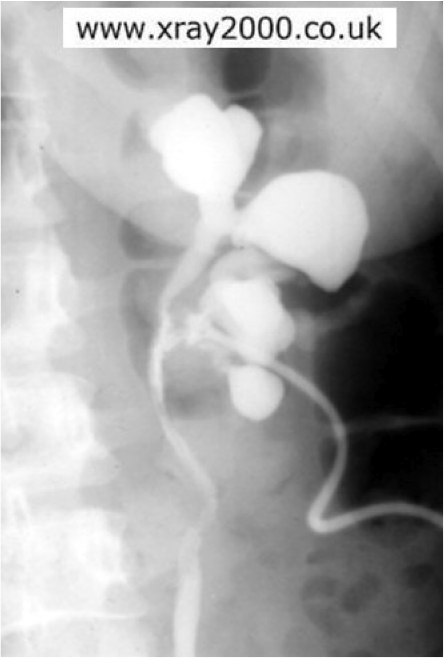
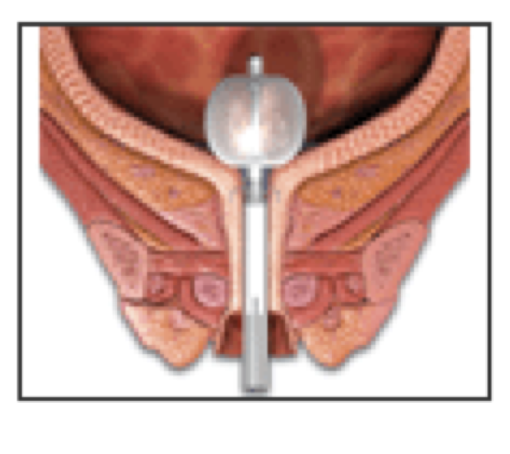
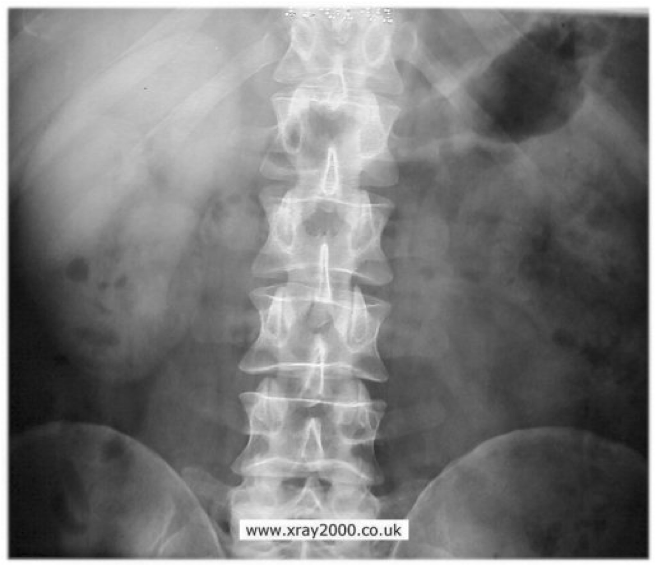
.png)
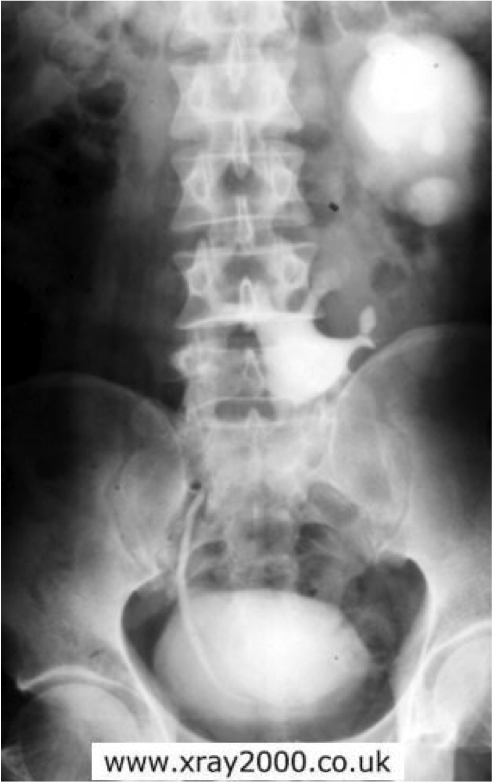
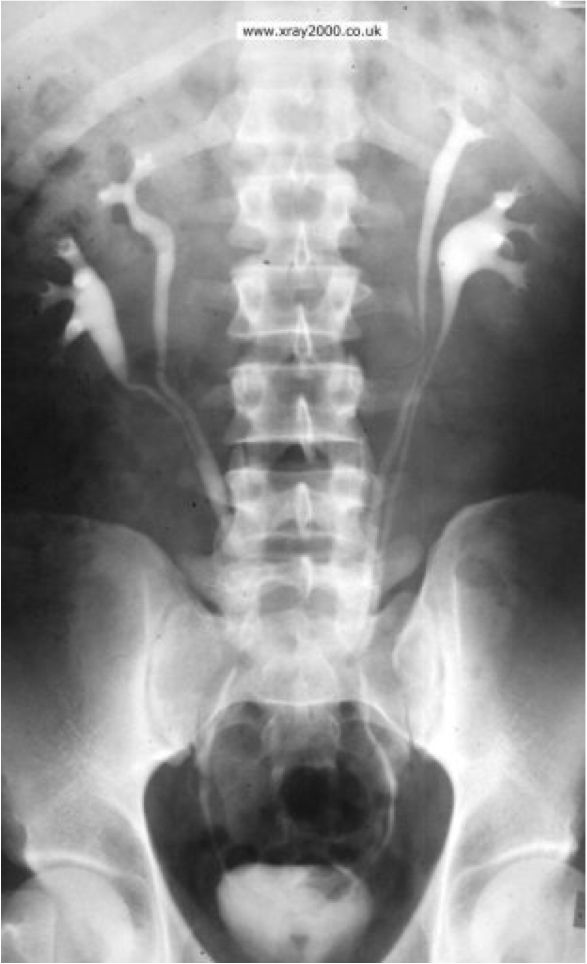
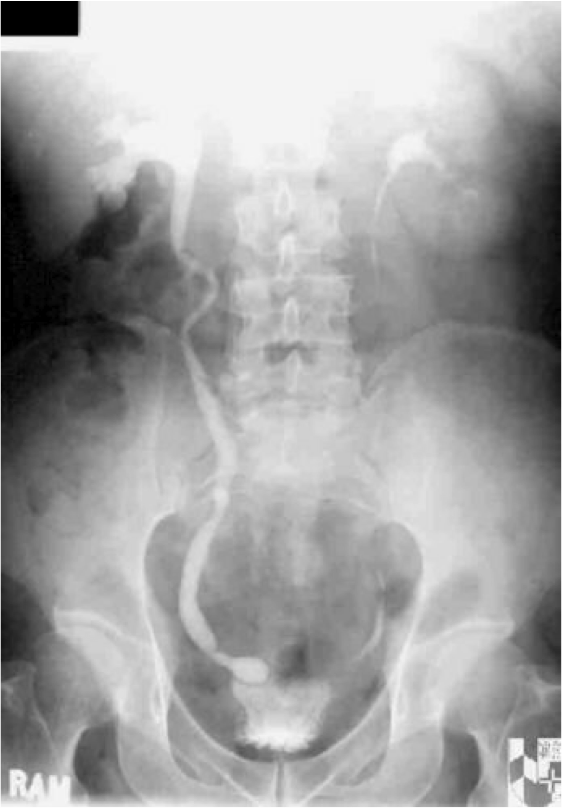

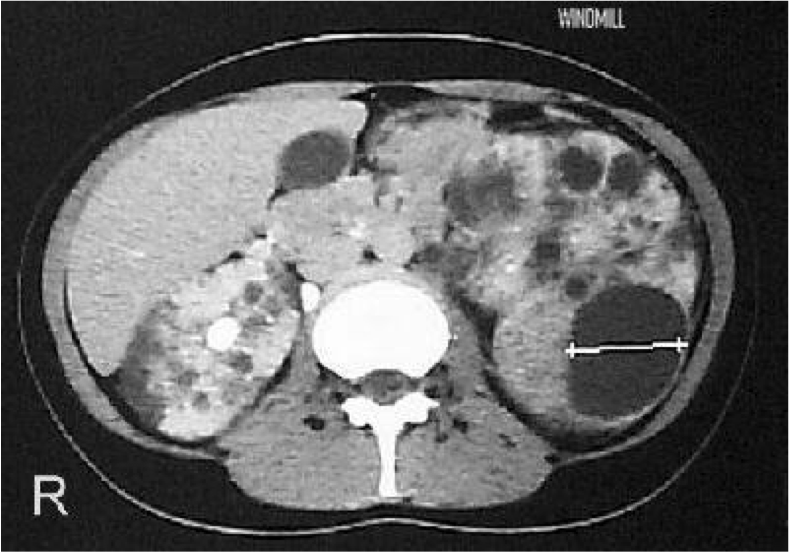
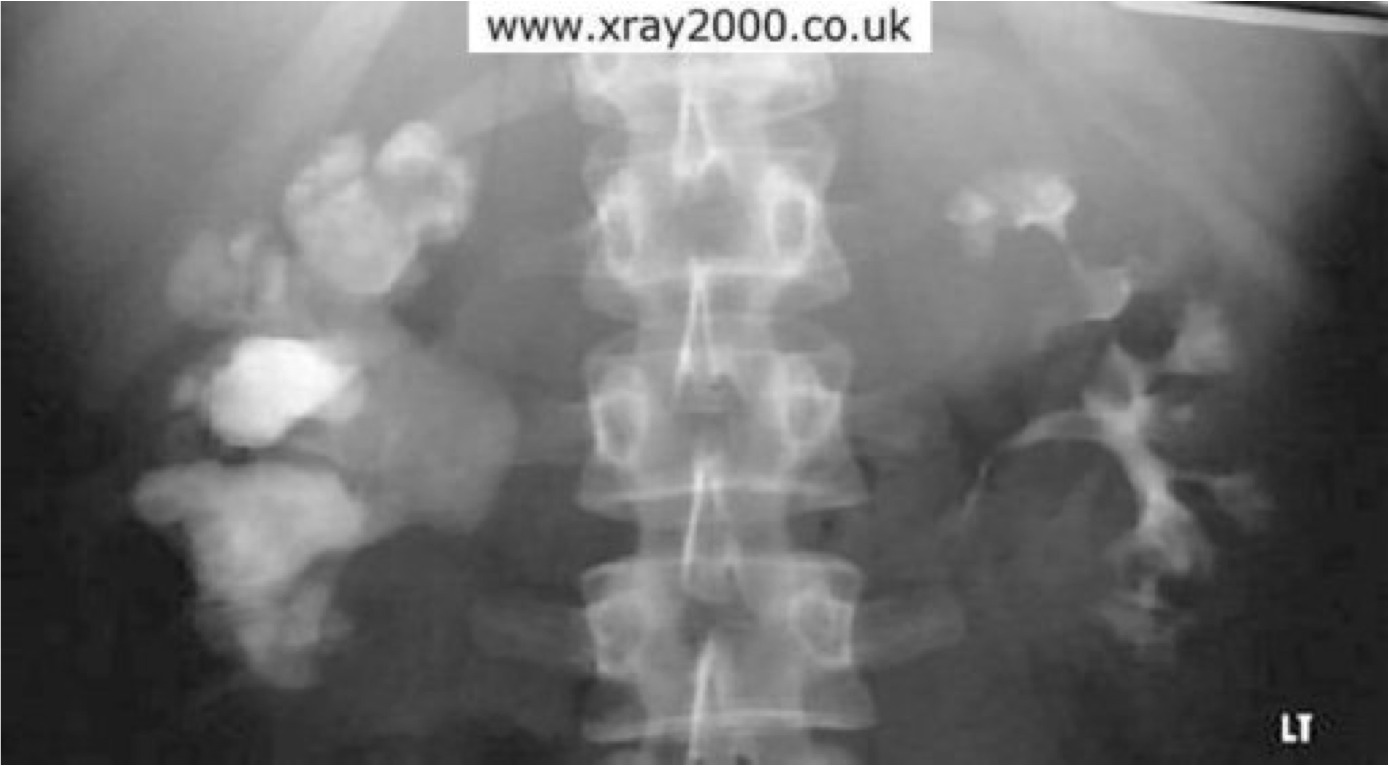
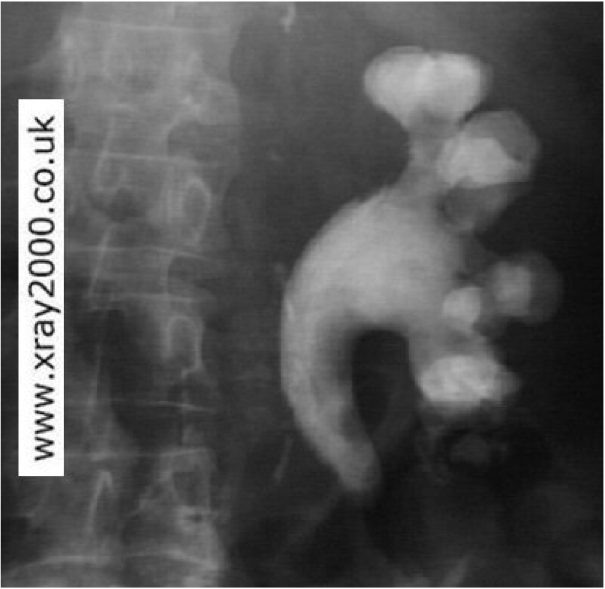
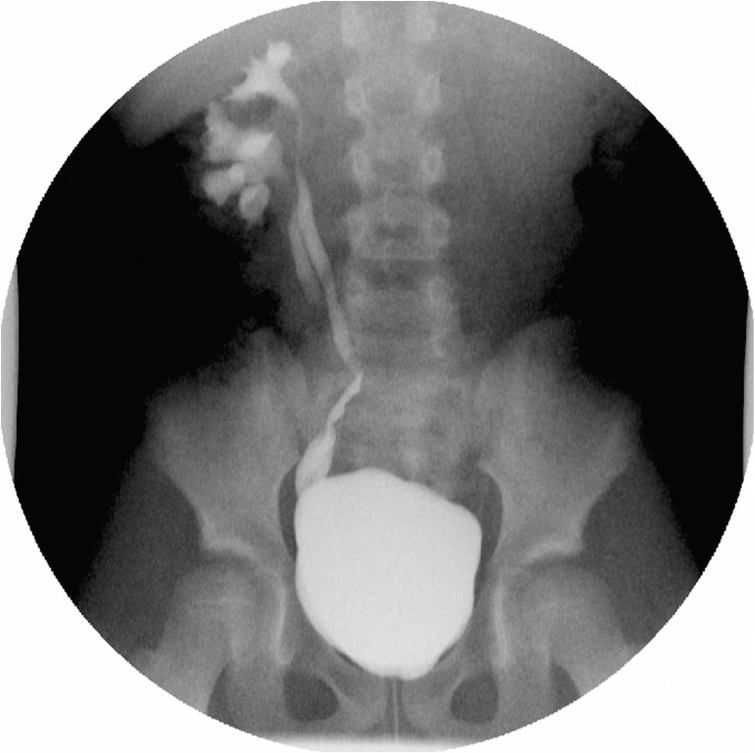
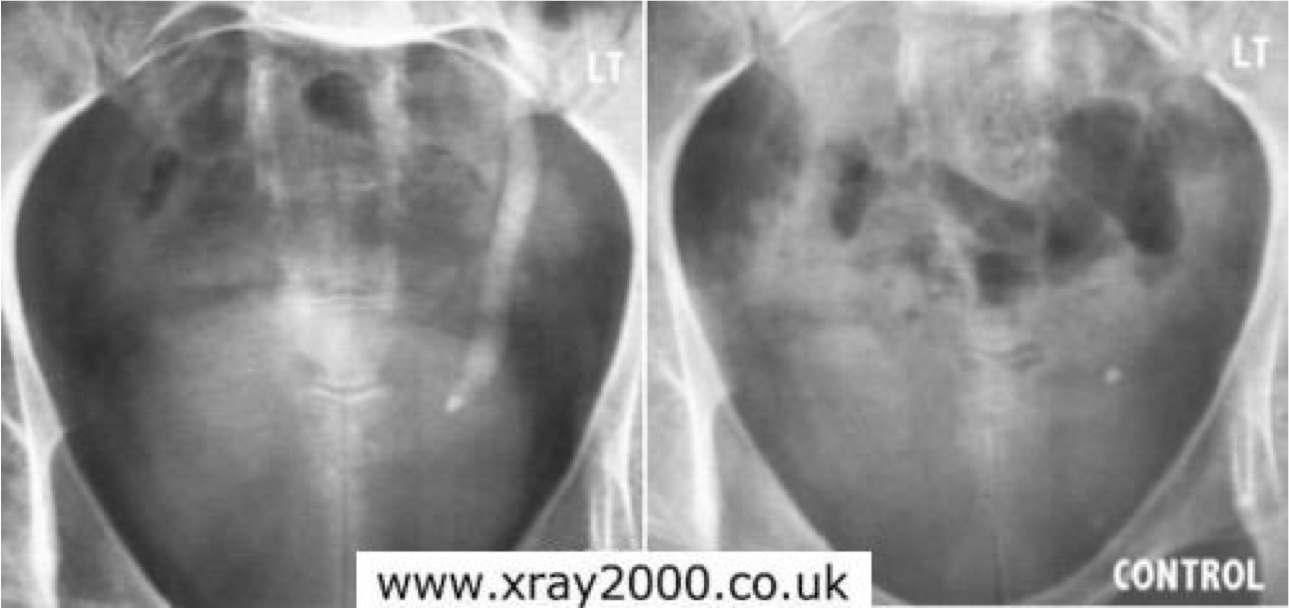
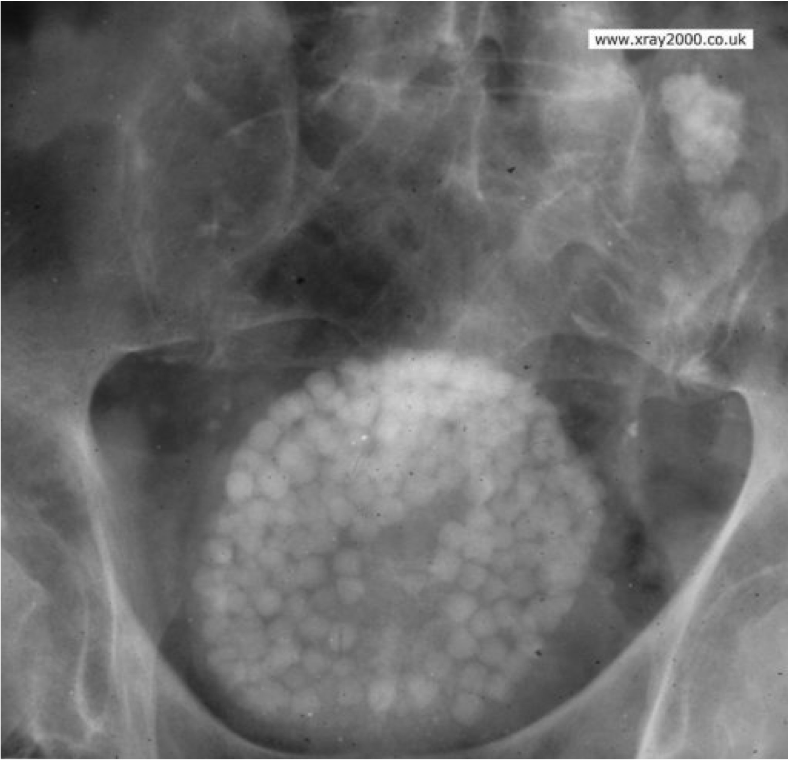

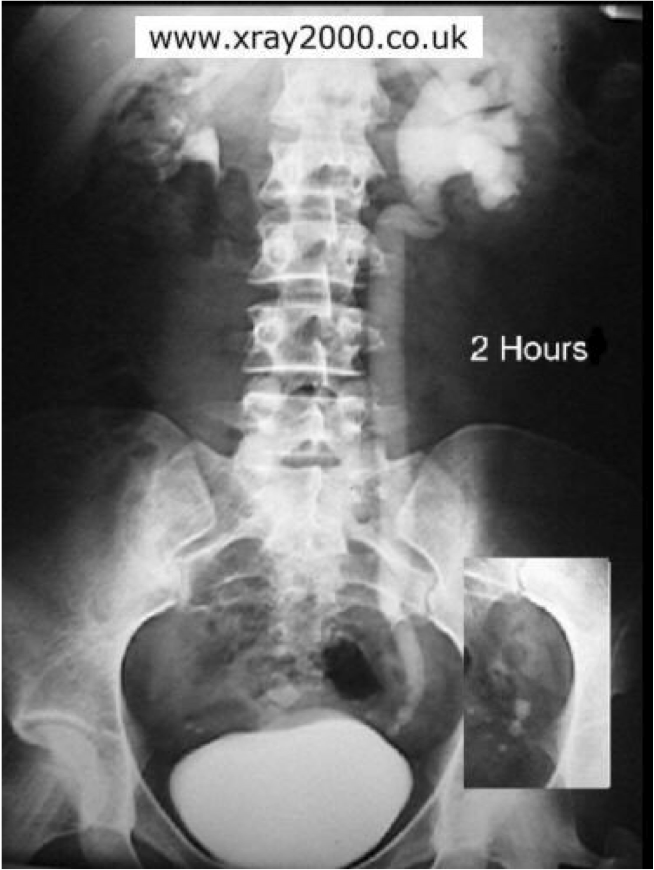
.png)
